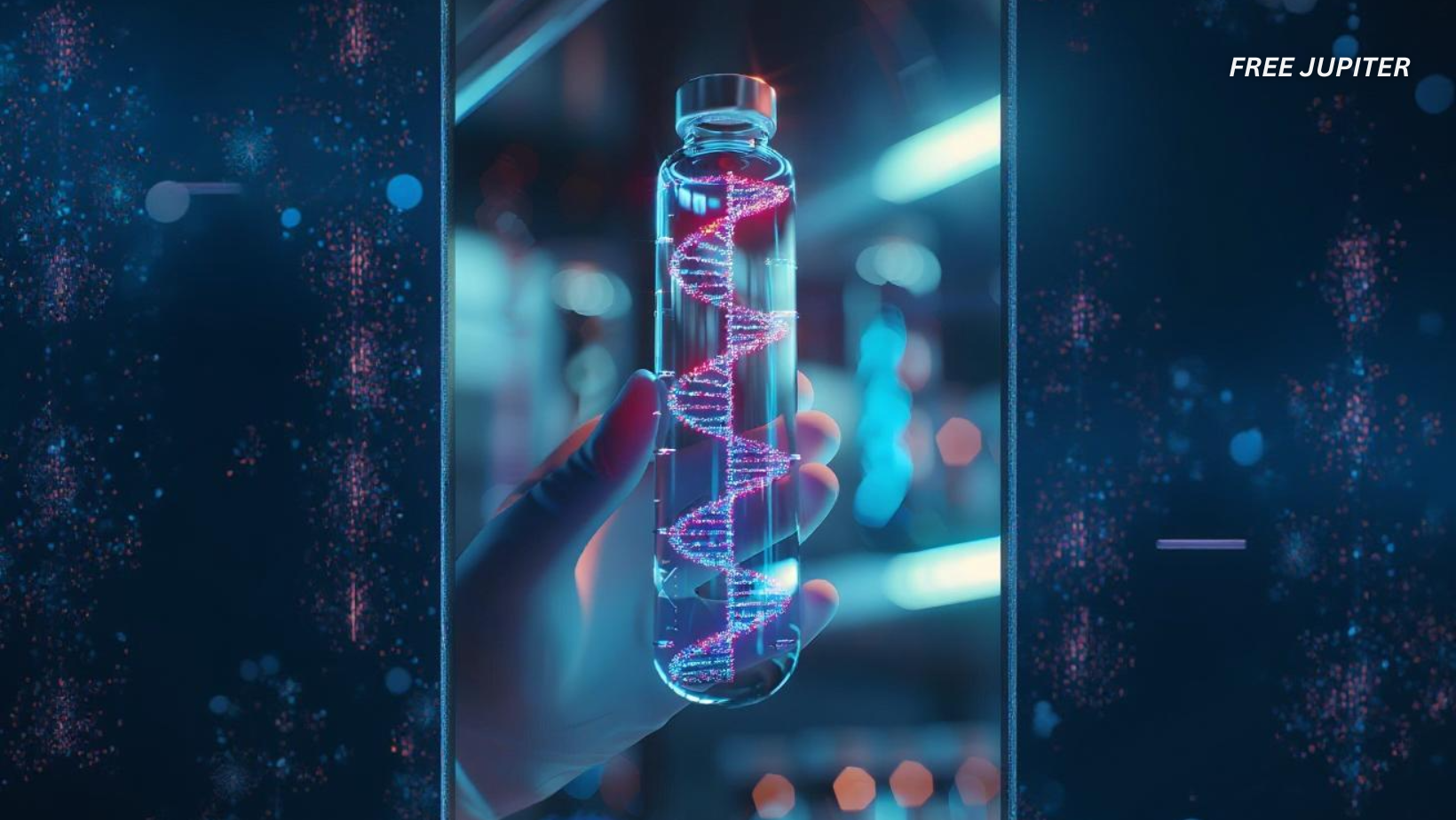It sounds like the opening scene of a sci-fi movie: scientists piecing together strands of human DNA in a lab, base by base, with the ultimate goal of crafting entire chromosomes from scratch. But this isn’t fiction—it’s happening right now in the UK.
Researchers are diving headfirst into a wildly ambitious project: the creation of synthetic human DNA. In plain terms, they’re not just editing genes here and there—they’re attempting to build the blueprint of life from the ground up.
The possibilities are enormous, ranging from breakthroughs in disease treatment to unraveling the mysteries of aging. But as with any powerful technology, the ethical and safety concerns loom just as large.
Let’s unpack what this all means—and why people are so divided about it.
The Big Idea: Creating DNA from the Ground Up
To appreciate what’s happening, it helps to understand DNA in the simplest terms. DNA is like the master instruction manual for life. It tells your body how to build proteins, grow tissues, and basically do everything.
Every human’s DNA is written using four letters—A, T, G, and C. Those letters stand for chemical building blocks that repeat in incredibly complex patterns. Your entire body, personality, and health are shaped by how those letters are arranged.
Now, scientists from prestigious UK institutions like Oxford, Cambridge, Imperial College London, and others are teaming up to do something extraordinary: recreate human DNA from scratch in a laboratory setting.
They’re not copying DNA from a person or editing existing genetic material. Instead, they’re manufacturing it—base by base—like assembling LEGO blocks, only far more microscopic and infinitely more complicated.
Read more: One Gram of DNA Can Store Around 215 Petabytes. More Data Than All of YouTube!
Why Are They Doing This?
The short answer: to understand life better—and potentially change it for the better.
By creating synthetic DNA, researchers can explore how genes function without the messiness and unpredictability of working with real human cells. It’s like building a test model in a controlled environment rather than trying to tinker with a real, functioning engine.
Here’s what they’re hoping to achieve:
- New treatments for chronic diseases like heart failure, autoimmune disorders, and certain viral infections.
- Insights into aging—how and why our bodies change over time, and what can be done to slow the process.
- Better understanding of the “dark matter” of the genome, the large portions of DNA that don’t directly code for proteins but still seem to play crucial roles in how our bodies work.
One Cambridge researcher, Dr. Julian Sale, summed it up simply: “This is about developing therapies that will improve people’s lives as they age, leading to healthier aging with less disease.”
From Cells to Chromosomes: What’s the Plan?
To make this all work, the scientists are starting small. They’ll first build short strands of synthetic DNA in the lab, then insert them into human skin cells to see how they behave. If the inserted DNA works the way it should, it could act like a switch, telling the cell to perform specific tasks—or stop doing harmful ones.
Eventually, the plan is to scale up and build full chromosomes, which are huge bundles of DNA found in each of our cells. If they can successfully do this, it could pave the way toward building an entire synthetic human genome—essentially a completely lab-made set of instructions for creating a human being.
Sounds wild? It is. And that’s why it’s raising eyebrows across scientific, ethical, and even philosophical circles.
Read more: A DNA Technique Is Helping To Find Women Who Deserted Their Babies
Potential Game-Changers
The medical applications are what grab headlines. And they are indeed promising:
- Disease-Resistant Tissues – Imagine growing a patch of skin or heart tissue that’s immune to certain viruses or diseases. It could transform organ transplants and wound healing.
- Understanding Genetic Disorders – Researchers could test how specific genetic mutations affect cells without needing human donors.
- Synthetic Organs – With full control over DNA and cell behavior, scientists might one day grow organs in a lab, custom-built to match a patient’s biology.
- Mitochondrial Solutions – There’s even talk about creating synthetic mitochondria (tiny cell structures that produce energy), which could help women with mitochondrial diseases have healthy children without relying on egg donors.
The Flip Side: Playing God?
With great power comes… well, a tidal wave of concerns.
Critics say the work dances dangerously close to “playing God”, especially if it moves beyond disease treatment and ventures into enhancing human traits—like intelligence, appearance, or strength.
Professor Bill Earnshaw of the University of Edinburgh didn’t mince words: “The genie is out of the bottle.” According to him, once this technology is available, it could be impossible to stop others—especially those with harmful intentions—from misusing it.
And that’s not just paranoia. Designer babies, genetic manipulation for social advantage, and even bioweapons are all potential risks if this technology isn’t tightly regulated.
Dr. Pat Thomas, an expert in genetic ethics, warned that while most scientists are guided by good intentions, the same tools that heal could also harm—or be used in warfare.
Environmental Risks: When Lab Life Escapes
Even if we don’t go full Frankenstein, there are other serious worries—like what happens if synthetic organisms escape into the wild?
Some labs have already created engineered bacteria to eat plastic or clean up oil spills. But what if these microscopic “helpers” mutate, spread uncontrollably, or wreak havoc in natural ecosystems?
As Professor Iain Brassington puts it: “Such bugs getting into the environment could be catastrophic.”
This highlights the delicate balance between innovation and precaution. We’re now in a place where we can build life, but whether we can control it is a different question altogether.
Read more: Your DNA Is Actually So Long That It Can Stretch From Earth to Pluto And Back 17 Times!
So… Is This the Future or a Cautionary Tale?
Right now, we’re still in the early stages. Full synthetic human genomes aren’t around the corner just yet. The research teams are focused on understanding fundamental questions about genetics, disease, and cellular behavior. The real-world medical applications could take decades to fully develop.
But the foundation is being laid—and fast.
This science offers a glimpse into the future of medicine, one where illnesses could be prevented before birth, organs could be grown in a lab, and aging could become something we manage rather than endure.
At the same time, it opens the door to deep moral dilemmas about identity, control, and what it really means to be human.
One thing’s for sure: whether this technology becomes our next medical miracle or an ethical nightmare will depend on how wisely we wield it—and how carefully we draw the lines between exploration and exploitation.
Final Thoughts
The creation of synthetic human DNA is one of the most ambitious scientific projects of our time. It offers the promise of healing and understanding at a level never before possible—but also the power to rewrite the very code of life.
Are we ready for that responsibility? Time, regulation, and humanity’s collective wisdom will have to decide.










